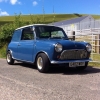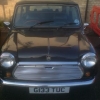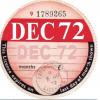I don't really need one but with a new baby in the house and a manic 4 year old I need an excuse to be out in the garage for some ear ache relief and I can always buy another mini to put it in when it's finished, if I can get away with it.
Anyway, picked up a 1275 a+ short engine yesterday with an engine number 12H694AAZ
Bit of research shows its possibly 1980-1982 ellegro.

I want to spend the next month or so reading, reading some more and get everything clear in my head before getting stuck in. Ordered the ultimate mini builder dvd too.
I'm also going to use this time to collect parts for the build.
The plan
Nothing Lairy just a nice road friendly engine that has a bit more power than standard, that will spend most of its life under 5000 rpm. My days of driving like a fruit cake are long gone.
I'm thinking
Big valve head( mildly ported)
Sw5 cam
How does this sound for road use?
Now the block looks in pretty good shape and looks to be on its standard bore, still has honing marks in the bores. I'll take it to my local machine shop and see what they think as it does have some very minor surface rust in one of the bores. I'd like to keep t 1275 if possible.

The pistons are marked m2210.
Is it worth keeping these or would there be a better option?





















